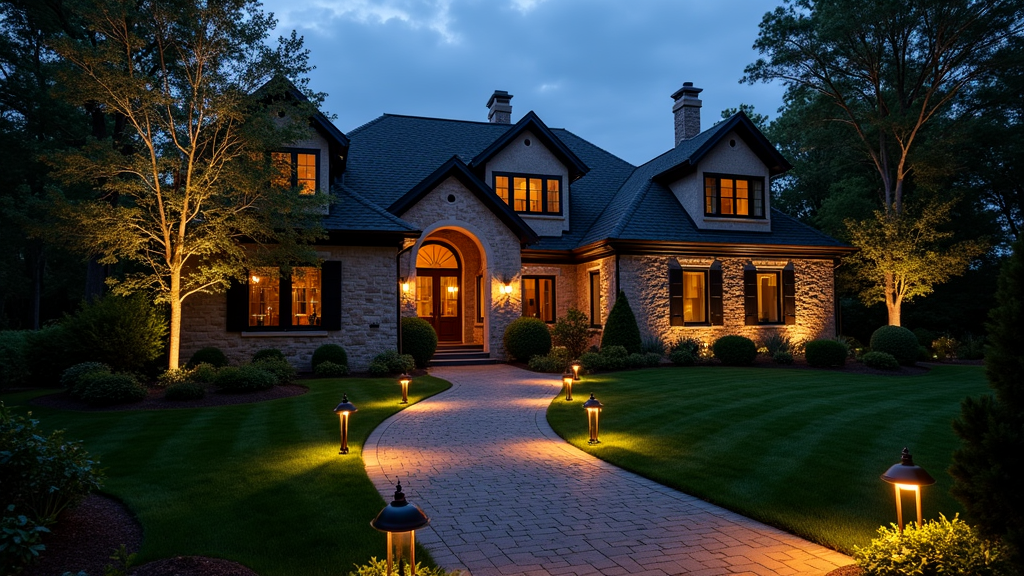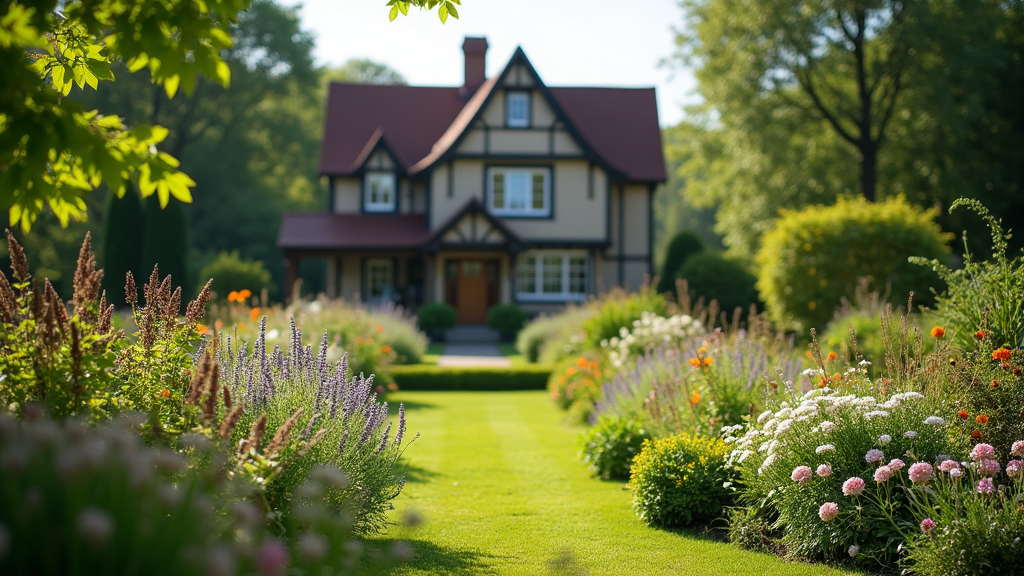Introduction
Have you ever walked into a garden and felt an overwhelming sense of peace wash over you? Or perhaps strolled through a bustling urban park and felt invigorated by the lively atmosphere? These experiences are not mere coincidences; they’re rooted in the intricate relationship between landscape design and human psychology. In this article, we’ll delve deep into The Psychology of Landscape Design: How Spaces Affect Mood, exploring how different elements in our environment can influence our feelings, behaviors, and overall well-being.

What Is Landscape Design?
Landscape design is both an art and a science that involves the planning, design, and management of outdoor spaces. It encompasses everything from gardens to urban parks, ensuring that these areas are not only aesthetically pleasing but also functional and sustainable. The goal is to create environments that enhance quality of life, promote well-being, and foster connections with nature.
The Importance of Designing Landscapes
Designing landscapes goes beyond creating beautiful scenery; it plays a crucial role in shaping our experiences. Whether you’re designing a backyard oasis or a public park, understanding the psychological impact of your design choices can lead to spaces that uplift spirits and foster community engagement.
The Intersection of Psychology and Landscape Design
Understanding Human Emotions in Outdoor Settings
Human emotions are deeply affected by our surroundings. Research shows that natural environments can elicit positive feelings such as calmness, happiness, and nostalgia. This connection between nature and emotion is why landscape design is so vital in creating spaces that resonate with people.
Nature’s Therapeutic Effects
Studies have indicated that spending time outdoors can reduce stress levels, lower blood pressure, and improve mood. Natural landscapes provide a respite from daily stressors, allowing individuals to recharge mentally and emotionally. This therapeutic effect is why many hospitals incorporate gardens into their designs—promoting recovery through serene environments.
Elements That Influence Mood in Landscape Design
Color Theory in Landscape Design
Colors http://shanewjpi365.theburnward.com/crafting-a-zen-garden-elements-of-tranquil-landscape-design play a significant role in how we perceive our environment. Warm colors like red, orange, and yellow tend to evoke excitement or energy, while cool colors such as blue and green promote tranquility. Understanding color theory can help landscape designers create spaces that align with the desired emotional response.
Table: Emotional Associations with Colors
| Color | Emotion | |------------|------------------------| | Red | Passion, Energy | | Orange | Enthusiasm | | Yellow | Happiness | | Green | Calmness | | Blue | Serenity | | Purple | Creativity |
The Role of Texture in Outdoor Spaces
Texture adds depth to landscape design. Rough textures can evoke feelings of stability while smooth surfaces may inspire comfort. Incorporating various textures—like soft grasses against sturdy stones—can create dynamic environments that engage multiple senses.
Spatial Layouts: Creating Flow
The Psychological Impact of Open vs. Closed Spaces
Open spaces often lead to feelings of freedom and expansiveness, while enclosed areas can provide comfort but may also induce claustrophobia if too constrictive. Designers must carefully consider how spatial layouts affect human behavior—whether encouraging social interaction or providing solitude.
Pathways: Guiding Movement Through Landscapes
Pathways serve as guides through outdoor spaces, influencing how individuals navigate an area. Curved paths may encourage exploration while straight lines promote efficiency. Understanding these dynamics helps create pathways that enhance user experience.
Nature-Inspired Design Principles
Biophilic Design: Connecting People with Nature
Biophilic design aims to connect humans with nature through architectural elements reflecting natural forms. Incorporating features like living walls or water elements fosters an innate connection to the environment—enhancing well-being.
Sustainable Practices in Landscape Design
Sustainability not only benefits the planet but also impacts mental health positively by promoting a sense of responsibility towards nature. Designers focusing on eco-friendly practices contribute to healthier ecosystems while enhancing user satisfaction.
Cultural Influences on Landscape Perception
How Cultural Background Shapes Our Experience
Cultural factors significantly influence how we perceive landscapes. Traditional Japanese gardens emphasize simplicity and serenity whereas Mediterranean designs celebrate vibrancy and communal space. Recognizing these differences allows designers to create culturally relevant environments.
Community Engagement Through Shared Spaces
Effective landscape design fosters community engagement by creating shared spaces for social interaction. Parks designed for gatherings or events become focal points where communities connect—strengthening social ties.
Integrating Art into Landscape Design
Sculptural Elements: Focal Points That Inspire Reflection
Incorporating artistic sculptures into landscapes serves as focal points for contemplation or conversation starters among visitors. Art enhances emotional responses while adding layers of meaning to outdoor spaces.
Interactive Installations: Engaging Users Physically and Emotionally
Interactive installations invite users to engage physically with their surroundings—creating memorable experiences that deepen emotional connections with the space itself.
Psychological Benefits of Green Spaces
Urban Parks: A Breath of Fresh Air Amidst Concrete Jungle
Urban parks act as essential green lungs within cities—offering residents access to nature amidst urban chaos. Studies indicate proximity to green spaces leads to improved mental health outcomes—including reduced anxiety levels!
List: Benefits of Urban Parks
- Improved air quality Reduction in urban heat islands Increased physical activity Enhanced community cohesion Boosted mental well-being
The Role of Water Features in Landscape Design
Calming Effects of Water Elements
Incorporating water features like fountains or ponds enhances sensory experiences within landscapes—invoking feelings associated with tranquility while muffling city noise pollution!
Benefits:
Promotes relaxation Encourages wildlife interactions Enhances aesthetic appealSeasonal Changes Impacting Mood
Embracing Seasonal Variability Through Design Choices
Seasonal changes bring diverse moods throughout different times each year! From vibrant spring blooms signaling renewal or crisp autumn leaves evoking nostalgia—designers should consider seasonal variability when planning outdoor spaces!
Tips for Seasonal Considerations:
- Choose perennial plants for year-round beauty Plan for seasonal festivities (e.g., holiday lights) Incorporate deciduous trees offering shade during summer months
Lighting's Role in Landscape Design
Natural vs Artificial Lighting Effects on Mood
Lighting influences ambiance significantly! Natural sunlight brightens environments boosting serotonin levels; artificial lighting enhances safety but requires careful consideration regarding intensity/color temperature effects on user experience!
Best Practices:
1) Use warm LED bulbs near gathering areas 2) Highlight pathways clearly without overpowering night sky visibility 3) Incorporate solar-powered lights for sustainability
Landscaping Techniques That Enhance Well-Being
Therapeutic Gardens: Healing Through Nature Interaction
Therapeutic gardens specifically designed for healing purposes offer visitors opportunities for mindfulness practices! These gardens promote relaxation by engaging all five senses intentionally!
Key Elements:
- Aromatic plants stimulating olfactory senses Textured surfaces inviting tactile exploration Soundscapes created using water features/birdhouses
Creating Multi-Sensory Experiences Outdoors
Engaging All Five Senses Through Thoughtful Design
Designers should aim at crafting multi-sensory experiences by integrating visual aesthetics alongside auditory/olfactory stimuli! This holistic approach enriches visitor encounters within outdoor settings significantly!
Ideas:
1) Include fragrant flowers/herbs throughout paths
2) Strategically place seating areas near bubbling brooks
3) Utilize colorful plants attracting butterflies/birds
Inclusive Landscaping: Designing For All Abilities
Accessibility Considerations In Public Spaces
Creating inclusive landscapes ensures everyone enjoys natural settings regardless of physical abilities! Thoughtful designs cater accessibility requirements ensuring diverse populations benefit equally from outdoor experiences!
Strategies Include:
1) Wide pathways accommodating wheelchairs/strollers
2) Resting spots along trails providing breaks
3) Braille signage enhancing navigation options
Community-Centric Designs For Social Interaction
Encouraging Interaction Through Space Planning
Community-centric designs prioritize promoting interactions amongst users fostering stronger relationships among neighbors/friends! Effective planning engages frequent visitors leading social connections blossoming effortlessly!
Key Features:
1) Gathering spaces featuring picnic tables/fire pits
2) Open fields encouraging recreational activities (e.g., soccer!)

Maintenance As A Reflection Of Care
Long-Term Care Strategies For Sustainable Landscapes
A well-maintained landscape reflects care/respect towards nature enriching user experience positively! Establishing long-term maintenance strategies assures sustainability promotes ongoing enjoyment benefiting local communities continually!
Maintenance Suggestions:
1) Regular pruning/removal dead vegetation
2) Seasonal plant rotations keeping aesthetics fresh
3) Engaging volunteers/local organizations fostering stewardship
FAQs About The Psychology Of Landscape Design
Q1: How Does Landscape Design Affect My Mental Health?
A1: Quality landscape design promotes positive emotions through natural elements reducing stress levels enhancing overall well-being immensely!
Q2: Can I Create A Therapeutic Garden In My Backyard?
A2: Absolutely! By incorporating soothing plants/water features—you too can cultivate your personal therapeutic retreat at home easily!
Q3: What Are Some Popular Landscaping Trends Today?
A3: Current trends include biophilic designs integrating sustainability/artistic expressions enhancing connectivity between people/nature harmoniously!
Q4: Why Are Colors Important In Landscaping?
A4: Colors evoke emotions influencing perceptions significantly impacting mood which makes them vital considerations during any landscaping project undertaken consciously!
Q5: How Can I Make My Yard More Inviting For Friends And Family?
A5: Add comfortable seating areas surrounded by lush greenery paired with interactive elements (like games!) will invite guests naturally fostering connections effortlessly!
Q6: What Are Some Eco-Friendly Landscaping Practices To Consider?
A6: Native plant selection combined efficient irrigation techniques ensures environmental sustainability whilst maintaining beautiful outdoor settings effectively over time too seamlessly!
Conclusion
In summary, understanding The Psychology of Landscape Design: How Spaces Affect Mood is essential for creating environments that resonate positively with individuals seeking solace or community engagement alike! By leveraging principles grounded psychology/design—the possibilities are endless when it comes crafting meaningful outdoor experiences enriching lives profoundly across all walks life beautifully interconnectedly! So whether you're an aspiring designer or simply someone looking to enhance your own yard—embrace these insights embracing creativity thoughtfully ensuring harmony reigns supreme wherever you tread outdoors confidently!